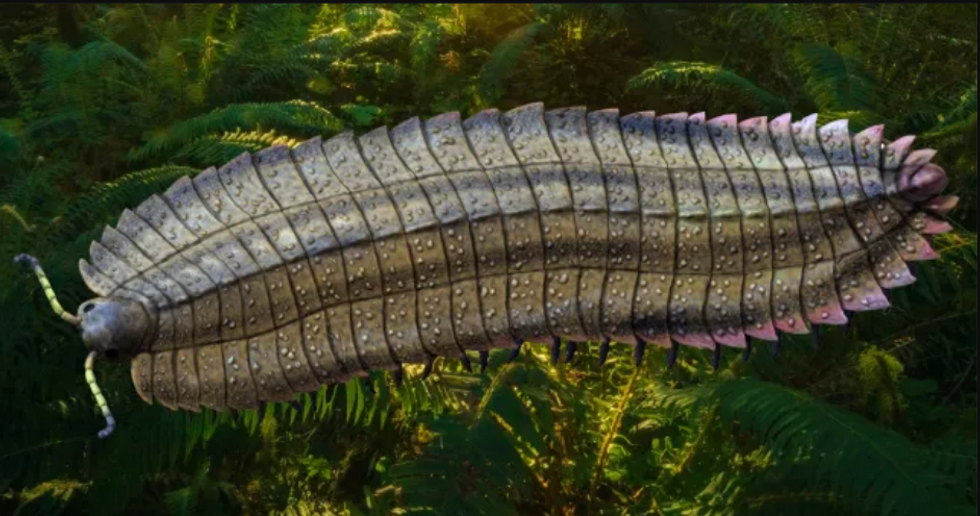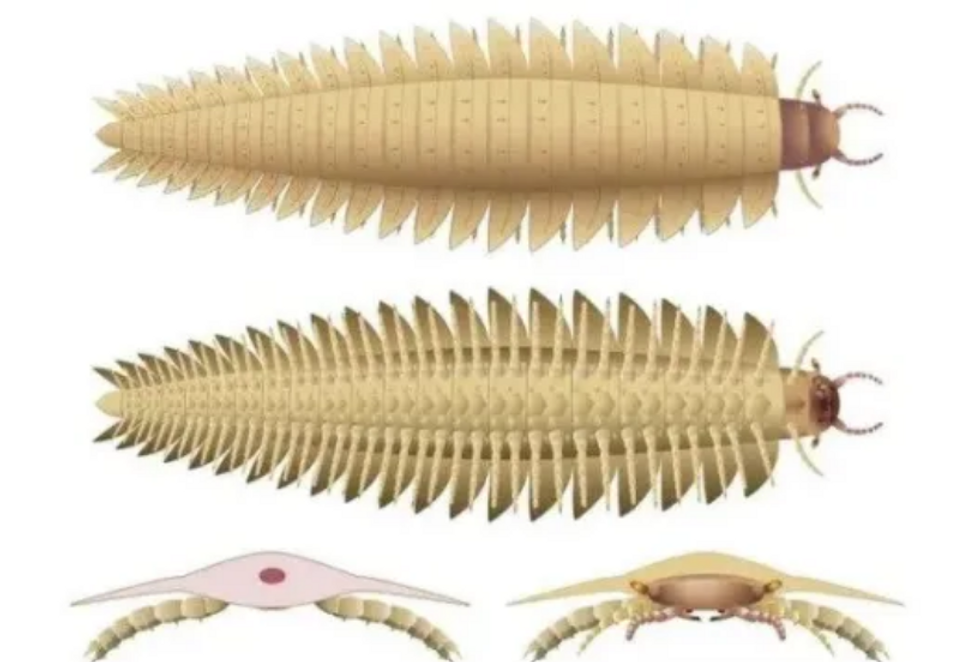Holly Bishop
Guest Reporter

Scientists have discovered a ginormous 8.5 foot long millipede that used to roam the earth 340 million years ago.
The body of the Arthropleura was discovered decades prior, however, thanks to the creature’s ability to shed its exoskeleton through an opening on the top of its body, researchers had never been able to determine any characteristics about the insect’s head.
However, thanks to the unearthing of two well-preserved fossils, palaeontologists can finally envisage the 8.5 foot long creature in its entirety.
The beast’s head was round in shape, and had two short, bell-shaped antennae. Its eyes protruded like those of a crab and it had a small mouth perfect for scavenging leaves and bark.

The Arthropleura was an arthropod - a group that includes modern-day insects, crabs and spiders.
It lived in forests near the equator during the Paleozoic era, between 346 and 290 million years ago.
The creature, which has similar features to a millipede, weighed a whopping 45kg and was larger than an average car.
In spite of its staggering size, scientists believe it mainly ate vegetation.
MORE SCIENTIFIC BREAKTHROUGHS:
- 'Comet of the century' to be visible for last time tonight before disappearing for 80,000 years
- Space breakthrough: Nasa craft receives signal from depths of the solar system
- UK astronomer to join 'planetary-defence mission' in major space first
Thanks to new fossils, scientists were able to study its head to discover more about the mysterious creature.
Study co-author Mickael Lheritier discussed his team’s findings: “We discovered that it had the body of a millipede, but the head of a centipede.”
The team used advanced CT scanning techniques to model the head whilst examining the fossils.
This allowed them to uncover hidden details without causing any damage to the ancient fossils.

Whilst the fossils are only two inches long, the team is confident that they can be used to tell us what the Arthropleura was like.
Palaeontologist James Lamsdell, who was not involved in the research, said: “We’ve been wanting to see what the head of this animal looked like for a really long time.
“When you chip away at rock, you don’t know what part of a delicate fossil may have been lost or damaged.”
Find Out More...




